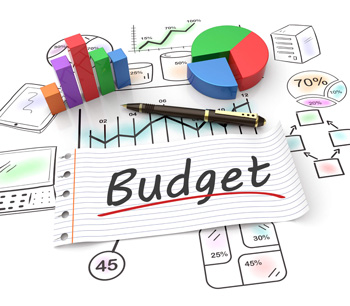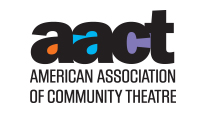Finance & Budgeting
Making It Work
Steps for a productive budgeting process
 A good budgeting process brings together all those in your organization who are responsible for adhering to the budget, and for implementing its objectives. The annual budgeting process needs to be documented, with clearly stated tasks, responsibility assignments and deadlines. A good budgeting process also includes strategic planning initiatives and specifies that income must be budgeted before expenses. Fixed costs are identified and related to reliable revenue, and budgeting decisions are driven both by mission priorities and fiscal accountability. [See additional resource links at bottom of this page.]
A good budgeting process brings together all those in your organization who are responsible for adhering to the budget, and for implementing its objectives. The annual budgeting process needs to be documented, with clearly stated tasks, responsibility assignments and deadlines. A good budgeting process also includes strategic planning initiatives and specifies that income must be budgeted before expenses. Fixed costs are identified and related to reliable revenue, and budgeting decisions are driven both by mission priorities and fiscal accountability. [See additional resource links at bottom of this page.]
Developing an Effective Budgeting Process
[The following is based on information developed by Elizabeth Hamilton Foley.]
- Put it in writing
Writing down your process creates a measurement tool you can use to monitor your progress. More important, a written process becomes a management tool that is available and known to everyone in your organization, rather than something in the head one or two people. - Decide who needs to be involved, and when
The executive director and program directors play a significant role in the budget process, of course, but so do staff members or volunteers who have responsibility for adhering to those budgets. Unless you have a board that functions as quasi-staff, staff members usually know more about operating details than board members, even very involved ones. In general, it's more efficient for staff to create the early drafts of budgets, and use finance committee members to review and vet the proposed drafts. - Establish a yearly timeline
Aim for having the budget approval by your board at least two months before the new fiscal year begins. Earlier is even better, if feasible. You know your peak business cycle, so integrate the annual budget process into a time of year when key participants, paid or volunteer staff, have the time to focus on it. If you're seeking grant money, remember that many funders require budgets for the following year far earlier than small and midsize organizations customarily are used to. - List specific tasks with explicit responsibility assignments
Within the timeline, list tasks specifically, e.g., "Distribute departmental budget worksheets and prior-period financial data for reference" or "Research costs of online ticketing." Even though many people may contribute to a task, pick one person to take leadership responsibility for making sure it happens. If the responsible person knows he or she will be held personally accountable to have completed the assigned task by the deadline, it is more likely to get done. Let everyone else in your organization know who this person is, as well, to make sure that suggestions, changes, and problems are communicated appropriately. - Keep budget line items and accounting line items in sync
Budget line items should align with accounting (financial statement) line items, and the structure of the full operating budget should match the chart of accounts (the structure of the accounting system), to ensure effective comparisons between budget and actuals. A mismatch between budget items and accounting items creates extra work for administrative staff or key volunteers who must translate between the two, and risks inconsistencies that undermine the usefulness of your financial reports. Especially for expenses, when accounting/financial statement line items exist without corresponding budget line items, the result may be budget overages or erroneously reported line item balances. When creating expense budget line items, be aware of how these internal line items translate to specified line items for outside reporting requirements such as the IRS 990, common funder application formats, industry surveys, and agency data gathering. While these should not dictate precisely how you construct your budget, being able to easily cross-walk your items to the required items will facilitate meeting these reporting requirements more accurately, and ensure staff or volunteer time is used efficiently. - Develop tools that include all relevant budget components and allow for "what if" scenarios
Work "part-to-whole": The format of the budget to be presented to the board need not have the level of detail that staff or finance committee members see. Using detail worksheets (examples listed below) as tools to build a "Full Budget" and a "Summary Budget" allows staff and finance committee members to go "deep into the trees" while presenting "the forest" to the board. Use detailed budget worksheets to prompt deeper thinking about budget components and to help ensure nothing is forgotten. Link these worksheets, or workbook tabs, to a Full Budget sheet in a single, multi-tab workbook. For instance, for the budget/accounting line item of "Insurance" a detail budget worksheet could prompt for the various types of insurance to be carried by your organization such as general liability, directors & officers, vehicle insurance, etc. The cost of each is entered in the detail worksheet and added together for the total insurance budget amount in the Summary Budget, via a formula linking the detail to the summary.
- A detailed Earned Revenue worksheet might include variable factors such as number of productions/classes/programs, etc., number of participants, tickets sold, prices, % capacity, discounts, etc. This allows staff to play out what-if scenarios, by changing these variables to see the resulting impact on the Full Budget.
- A detailed worksheet for Contributed Revenue would include a list of previous institutional donors and individual donor campaigns with prior gift amounts that would help staff to predict which of these could be depended upon for the upcoming year. These details would accumulate and link to the line items for Government, Foundations, Corporations, and Individuals in the Full Budget, so that the impact of any changes to the detail worksheet would flow through. Temporarily Restricted contributions and releases should be included in a separate section and tracked carefully to ensure that releases to unrestricted are budgeted appropriately. In-kind contributions can be included on this worksheet or on a separate one, depending on the quantity and complexity of such contributions. .
- A detailed Personnel worksheet would list each paid position with annual salary and would be set up to automatically calculate formula-driven related expenses such as Federal payroll taxes and other formula-driven fringes (e.g., state unemployment, workers' compensation, pension contributions, etc.). A formula on this worksheet to calculate % salary raises, for example, would allow management to see the difference in impact of 2% vs. 5% increase on the overall budget. This worksheet, or a separate one, would also include a list of fee-paid contractors the organization regularly engages such as directors, consultants, accountants, designers, teachers, interns, etc. that would also link in total(s) to the summary budget.
- A detailed Non-Personnel Expense worksheet would provide the opportunity to list the various organizational business expenses (bank fees, credit card merchant charges, dues & memberships, insurance, interest, licenses, registrations) office and general expenses (conferences & meetings, printing jobs, copying, mailings/postage, supplies, telephone and technology), occupancy (rent, utilities, maintenance, security) and trips (local and long distance travel, transportation, accommodations, per diems), as well as any specialized program-related expenses.
- Other detail worksheets for Capital Purchases, In-Kind Contributions, Productions, and special worksheets to suit the specific departmental needs of your organization can be created as necessary and linked to the Full Budget.
Additional Resources
- Articles:
- "Financial Management for Nonprofits" discusses financial roles and responsibilities of executives and staff, basics of accounting, developing an operating budget, working with auditors, and more. (This article is part of our AACT-member Resource Library: search using the word financial)
- "Crafting a Sustainable Nonprofit Business Model in the Arts," explains the process for creating impactful strategies and sustainable business models into the future. (This article is part of our AACT-member Resource Library: search using the word Sustainable)
- Free Booklet (PDF): Budgeting: A Guide for Small Nonprofit Organizations [Courtesy of Virginia Society of Certified Public Accountants]
- Helpful Websites:
- National Council of Nonprofits: Tools, resources, and samples for nonprofits
- Nonprofit Accounting Basics
- Recommended Books




